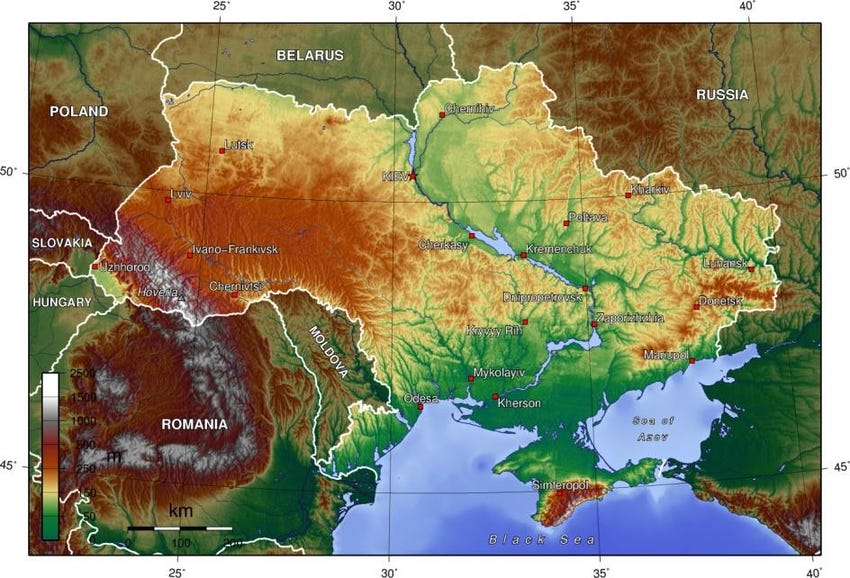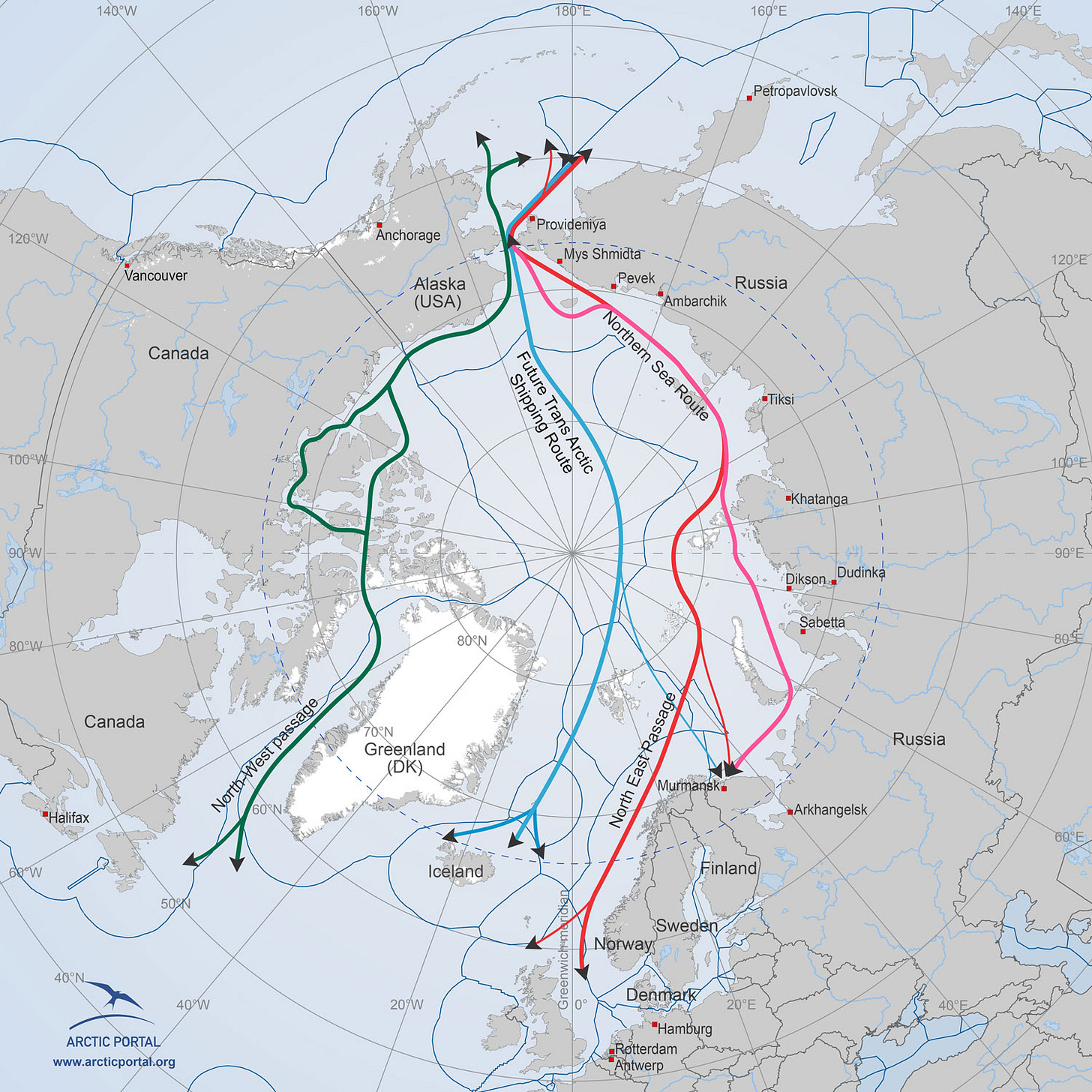The Politics of Extraction and Russian Negotiating Tactics
Why Trump must escalate to de-escalate in Ukraine
The current state of the Russia-Ukraine conflict is approaching a protracted crisis. In the process of negotiating a resolution, the emissaries of the Trump administration are failing to secure credible commitments. While NATO allies promise more weapons, it remains unforeseen as to whether they can actually furnish them. Ukraine is expanding the base of population for the military to include the elderly, and while casualty figures on the Russian side may be overstated by the West, persistent inflation could drag any long-term conflict to a halt or otherwise force a Total War-style escalation.
One must question in this state of affairs whether the post-modern state and wage anything beyond limited-aims conflict. Conventional warfare is tiring, expensive, and there is simply so much to watch on Netflix that the idea of mobilizing large population bases around “worthy causes” may be a thing of the past.
On the other hand, if one side can prove the other untrustworthy and dishonest, to the point of malevolent, then the conflict has a risk of escalating to a much broader conflict which includes the use of nuclear weapons. Contrary to popular belief, there is actually a degree of survivability to limited nuclear conflicts, which perhaps makes them all the more horrifying.
As of the publication of this article, there is an expectation that Trump and Putin will meet sometime in the next week. This is unlikely to happen, but even if it does, it’s likely to be a trap to undermine the credibility of the Trump administration by continuing to allow the conflict to drag out through bad-faith negotiation. Trump is preternaturally unwilling to impose meaningful consequences - even India is now supposing that it will simply pay secondary tariffs on oil, and while Russian exports to China account for 20% of Beijing’s oil consumption, secondary tariffs may be viewed as tolerable there as well. If those secondary tariffs could be used to justify increased spending on military aid to Ukraine, there is an opportunity to resolve the conflict with a demilitarized zone, however the constraints to this outcome will be discussed further in this article.
Strategic Constraints
Russia is boxed in by 30-odd years of NATO expansion, and even after having drawn a “red line” with Ukraine still found itself being provoked. The United States didn’t consider this a provocation, because the foreign policy establishment is unable to consider anything a provocation unless it is done by their opposition. Furthermore, said establishment falls between neoliberal and neoconservative camps, with no hard realists prominent enough to sound the alarm when it’s strategic opposition feels threatened beyond measure.
While Russia requires geopolitical assurances in regards to Ukraine, it is likely that for long term security to be fully realized, it’s borders would need to stretch up to or just past the Dnieper river. This would provide sufficient buffer to the Eastern European plane that could give Russia strategic security and the ability to integrate captured territories economically.
source: https://www.researchgate.net/figure/Topographic-Map-of-Ukraine_fig16_304164181
The underlying constraints for NATO are not particularly clear, except for the desire to divide Russia into multiple subordinate states and subsequently exploit its resources in international trade. This is explained in Zbigniew Brezinski’s The Grand Chessboard, and Putin has seemingly come to terms with it in recent comments acknowledging that conflict with the West - even as the Soviet Union experienced it - was geopolitical and not ideological.
Typically, Putin’s comments are positioned to maintain his authority over the majority of the Russian populace, which despite challenges is mostly appreciative of how his leadership has helped to rehabilitate their national spirit. What becomes an increasingly strategic challenge for the West is that this national spirit can take on a militant character. In its efforts to divide Russia, a state that has existed in varying forms for over a thousand years (a fact Putin loves to emphasize), it may in fact press a sort of fanatical nationalism forward that may launch a great wave across Eastern Europe - a wave that NATO fears.
As of now, the majority of Russians no longer view the United States as their primary enemy - instead 55% view Germany as their primary threat, followed by the UK (49%) and Ukraine (43%).
The implications of this are profound, as the Russian people can now begin to align themselves around a much clearer political goal: the denuding of NATOs Eastern and Central European allies, much less than an ultimate confrontation with the United States in order to hold on to a segment of Eastern Ukraine.
Economic Constraints
The United States has a primary economic constraint in that it has a high debt load and the new administration has at least promised in spirit to attempt to reduce it. As it stands now, it seems they will simply try to exceed the growth in debt with growth in the economy, but this means that any new major spending is suspect.
Corollary to this, tariffs have been introduced, in part to increase revenues. Now, with Russia unwilling to make firm commitments, secondary tariffs have been introduced. This scenario could in fact imply a new funding source for arms to Ukraine, however India remains the largest obstacle in this context. India has observed relative stability and growth in recent years, but this has been amplified by affordable Russian energy, which it has obtained at a discount due to sanctions elsewhere.
Confronting secondary tariffs from the United States would ultimately push India into the clientage of Russia, but accepting constraints on Russian oil would effectively terminate this period of rapid economic growth. Neither is desirable: India would not be a particularly good client of China - they are of comparable population and extremely different cultural attitudes - while it would not necessarily be as productive for the West to provide economic incentives to India when their domestic economies require local investment (as well as the capacity to achieve NATO’s new 5% spending goals).
Political Constraints
The major players here are currently the United States, Russia and India, because the administration of each has choices posed to it that could undermine their credibility among their domestic population/voter base. The triad of terror is as follows:
Trump must increase the pressure on Russia in order to force an accommodation
India must maintain cheap energy but likely won’t get it anywhere from Russia
Russia must extend the conflict as long as possible in order to drive up the pain experienced by NATO and the West, so that they are discouraged from pursuing confrontation with Russia and undermining its sphere of influence - for decades to come if possible.
In this context, Russia has most of the cards, whereas the United States can afford to back down - it is simply Europe that cannot afford for the United States to back down in its place. India will not abide increased tariffs, but it will ultimately not be an agreeable partner.
From an economic perspective, it may be even less agreeable than China in the long run, which means that permitting Russia to have what it wants in Europe while imposing secondary tariffs on India will subsequently drive China and the United States into a more mutually amicable accommodation: China is permitted India as a soft client state, Russia maintains a more robust sphere of influence and perhaps returns to European exports, but at a a higher imposed cost, while the United States can pursue debt reduction, undo foreign entanglements and retrench its military power for a longer-run conflict.
Long Term Endgame
Why would Putin seek to drag out the conflict and incur increasing costs for the West? Why would he seek to turn the screw so tightly? He essentially wants to retrench some of the Soviet-era Russian influence in Eastern Europe and the Baltic while rolling back a sufficient amount of NATO expansion so as to make any future retrenchment on the NATO side deeply uncomfortable. If anything, the new emphasis on the “Indo-Pacific” is an outlet here - if the North Atlantic Treaty Organization can identify new territory overseas that is outside Russia’s immediate sphere of influence,
Russia and China always benefit from maintaining some level of strategic rivalry. Russia mostly produces resources, China finished goods, and one always lacks what the other has. This lack of integration helps maintain two centers of power between them, and perhaps as central Asia opens up, or as climate transition turns the North of Russia into a new destination of a RingWorld landmass, they will be motivated to collaborate, or some elite will emerge to combine them from Kamchatka, but until then, sea lanes remain better than railways, and America will always be the sea power in this global configuration (in the spirit of Mackinder’s Heartland Theory).
source: https://hakaimagazine.com/videos-visuals/in-graphic-detail-the-polar-silk-route/
As it is today, the United States need to draw out the possibility of conflict with both Russia and China in order to justify advances against them. That may ultimately manifest itself as more complex economic integration, but it is limiting to the strength of the US Federal system and the Anglo-American establishment. This means that, in the state of retrenchment it is currently pursuing, everybody gets a little bit of what they want and perhaps one day confronts a remilitarized Germany - the long run wildcard in the current international system.
One wonders what historical preludes would allow us to divine how that will turn out.



